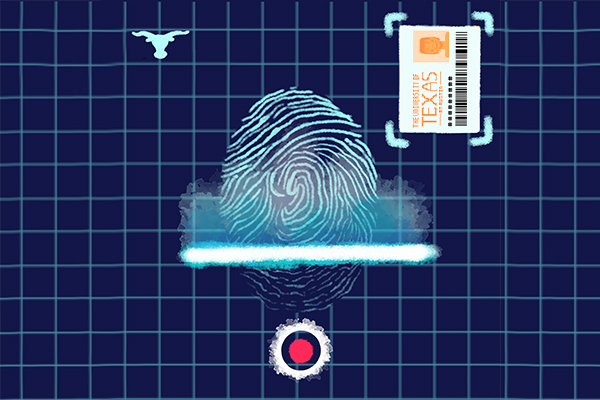Hand scanners will be used to swipe student residents into Jester 2nd Floor Dining and Kinsolving Dining Hall this semester.
When residents picked up their keys for their dorms during Mooov-In, they also had the choice to register their handprint into CS Gold, the University Housing and Dining network. The hand scanners are used to identify the resident and their meal plan when entering a dining hall, said Cynthia Lew, assistant director of marketing and communications for University Housing and Dining.
Lew said students who did not register their handprint into the scanners can still use their ID cards, or they can register their hands between 11 a.m. and 2 p.m. at both J2 and Kinsolving Dining until Friday.
Alex Rapp, associate director of information technology for UHD, said UHD is using IDEMIA MorphoWave Compact scanners, which the University Information Security Office reviewed and certified as secure. Student handprint images will not be stored in a server, Rapp said.
Rapp said the scanner translates the picture of a print into a hash, which is a type of encryption that cannot be reversed into the original data. The hash is then transmitted to CS Gold, the UHD network, to verify a student’s identity, Rapp said.
“There are no pictures taken,” Rapp said. “Even if you were to get a hold of the hash, there would be no way to turn it back into a picture of a hand or a fingerprint.”
Rene Rodriguez, UHD director of dining, said the implementation of hand scanners coincides with the rollout of the Resident Unlimited Meal Plan, which allows residents to swipe into J2 and Kinsolving Dining as many times as they want. He said as the number of dining hall visitors increases with the unlimited swipes and extended hours, the hand scanner will shorten the wait times.
“There is some time difference there because some students don’t have their cards readily available,” Rodriguez said. “They’re reaching into their backpacks (and) bags. That slows down the process. The hand scanner will avoid all (of) that.”
Rodriguez said he modeled the system after other universities who also use hand scanners, such as Virginia Polytechnic Institute and State University and the University of Baltimore. He said this system improves dining by making it as accessible as possible.
“Whether they are coming in for a full meal or just for a quick cup of coffee, we are aiming to handle that without having backup,” Rodriguez said. “We think it will improve the quality of service … for them to think they can walk in anytime they want.”
Computer science freshman Brandon Escalona said he registered his handprints while he was moving into his dorm. He said he was excited to see the University use new technologies to make things more efficient.
“It seemed really interesting and quick,” Escalona said. “You just walk in and wave your hand and be done. I also can make sure I don’t lose my ID because I never have to take it out.”





















